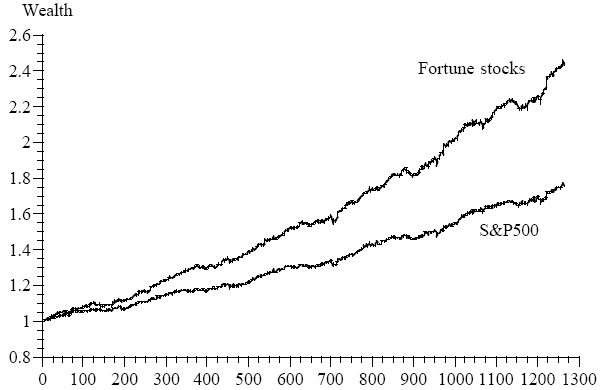In their 2005 paper entitled “A Great Company Can Be a Great Investment”, Jeff Anderson and Gary Smith evaluate the stock returns of companies rated highest in Fortune magazine’s annual surveys of “America’s Most Admired Companies.” Survey respondents are senior executives, directors and securities analysts, and the questions asked seemingly relate indirectly or directly to the investment value of the companies named. Using lists for 1983 (survey inception) through 2004 (a total of 22 years) and associated stock return data for the publicly held companies on the lists, they conclude that:
- Across the entire sample period, 214 publicly listed companies appear in the most admired lists. During their top-ten year, 57%-58% of these stocks outperform the S&P 500 index.
- A series of equally-weighted portfolios formed/reformed from Fortune’s most admired companies each year on or shortly after list publication date generates average annualized returns of about 17.7%, compared to 13.0% for the S&P 500 index.
- When held for five years rather than one year, the annual Fortune portfolios exhibit multi-year outperformance, generating an average five-year gain of 242% versus 175% the S&P 500 index. (See the chart below.)
The following chart, taken from the paper, compares the average cumulative growth in wealth up to 1,250 trading days after formation for the individual Fortune most admired portfolios versus the S&P 500 index. On average, the Fortune portfolios continue to grow at a faster rate than the index for years after formation.

The paper includes lists of the ten most admired companies for 1983-2004.
In summary, investors may systematically undervalue the stocks of the most admired companies.
Note that the study’s Fortune portfolios are equally-weighted, whereas the S&P 500 index is value-weighted. Also, the Fortune portfolios involve mostly large-capitalization stocks that may have sector and value-growth tilts, whereas the S&P 500 index is broadly diversified. These differences argue against the S&P 500 index as the appropriate performance benchmark to test financial markets theory. Also, the study does not address trading costs.